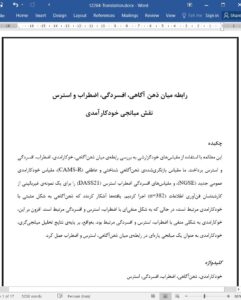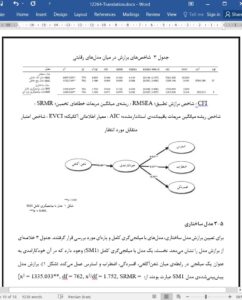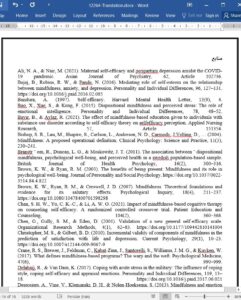Abstract This study used self-report measures to examine the connection between mindfulness, self-efficacy, anxiety, depression, and stress. We administered the Cognitive and Affective Mindfulness Scale-Revised (CAMS-R), New General Self-Efficacy Scale (NGSE), and Depression Anxiety Stress Scales (DASS21) to a non-clinical sample of Indian IT professionals (n = 382). The findings revealed that mindfulness was positively linked to self-efficacy, while it was negatively related to anxiety, stress, and depression. Furthermore, self-efficacy was negatively linked to anxiety, stress, and depression. In fact, according to the results of the mediation analysis, the role of self-efficacy worked as a partial mediator in the association between mindfulness, stress, depression and anxiety.
1. Introduction
Recent years have witnessed a surge in research on mindfulness across Psychology, Psychiatry and related disciplines. Mindfulness refers to various traits, practices, and processes that lead to a positive mental state characterized by awareness, along with non-elaborative and nonjudgmental attention (Bishop et al., 2004; Brown & Ryan, 2003; Brown, Ryan, & Creswell, 2007; Kabat-Zinn & Hanh, 1990). Further, mindfulness positively relates to the ability to pay attention to both internal (e.g., emotions, cognitions and their behavioral and somatic consequences) and external (e.g., social interaction, and environmental surroundings) stimuli, but more dispassionately than before (Glomb, Duffy, Bono, & Yang, 2011). Some of the common definitions of mindfulness include the following: “paying attention in a particular way: on purpose, in the present moment, and nonjudgmentally” (Kabat-Zinn, 1994).
4.1. Limitations and directions for future research
Our findings have their own limitations. To begin, the respondents in our study were educated (engineers), and thus were ‘white-collar’ (private sector IT company) employees. Based on the same, they may be more open to creating their own perspective than the ‘less-educated’ or the ‘blue-collar employees’. Resultantly, they were more alert and sensitive to the organizational environment











